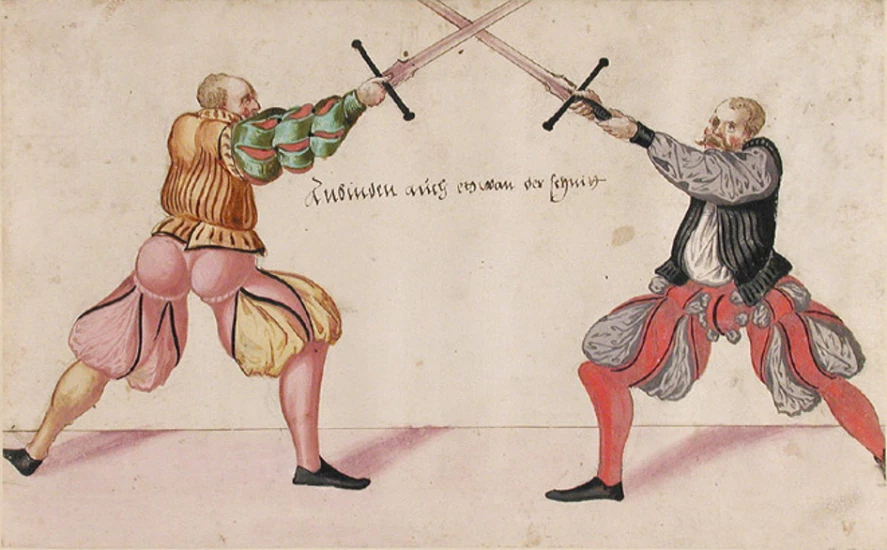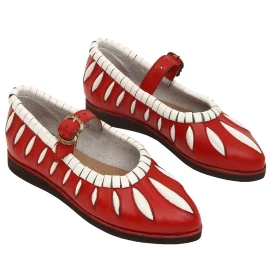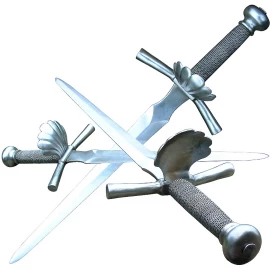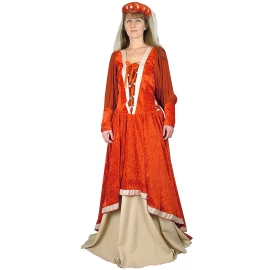Cold Weapons of Renaissance

Contents
Cold Weapons Still in the Spotlight
Despite drastic advances in military technology, which brought cannons, firearms and complex siege machinery to the battlefield, the sword remained a significant weapon. Advanced armour has made it increasingly difficult for warriors to penetrate it, which naturally called for new types of swords. Generally speaking, the Renaissance weapons were characterized by folded hangers, narrower blades and a thick cross-section. At first glance, it might seem that most swords from this period are lighter and smaller than their medieval counterparts. The truth is, however, that very large and heavy two-handed swords were observed during the Renaissance. What types of weapons were made available to soldiers?
The Estoc
Estoc is the French name for the longsword which was also known as the tuck sword in England. It had a longer handle for a comfortable grip and a straight blade. An average specimen weighed more than two kilograms and measured at least 1.3 meters. The blade was narrow and gradually tapered to a very sharp point. Because this weapon was very long and heavy, it was primarily used for stabbing. Thanks to the extended grip, the sword bearer received a great advantage that allowed the blade to penetrate the opponent’s armour with higher accuracy and greater strength.
Two-handed Swords
The Zweihänder, also known as the two-handed sword, became very popular during the 15th century and was mainly associate with famous mercenary soldiers called Landsknechte. The first regiments of these mercenaries were formed by Emperor Maximilian I. The Landsknechte used long weapons in combat, one of which was the two-handed sword. The two-handed sword could be up to 1.8 meters long. This massive weapon was extremely effective in breaking formations, mostly due to the two parrying hooks on the ricasso that intercepted and damaged the opponent's weapon.
Feder Swords
The Feder was a training sword used in German fencing schools during the Renaissance. It had a flexible rounded blade, a more pronounced ricasso and a blunt tip. It is slightly lighter than the classic two-handed sword and the point of balance is shifted in order to make the handling of the weapon easier. The tip of the sword could also be covered with a leather sleeve to guarantee a higher degree of safety during training sessions. Fighting with Feder swords is being practiced again nowadays thanks to the effort of various HEMA groups.
The Cinquedea
This short weapon was called the five-finger sword and has its origin in northern Italy. It has served as a complement to civilian attire for a long time, but it was used by fencers as well. Its wide blade gradually tapered to a point which wasn’t too sharp. This sword was often decorated with engravings or gilding – as a result, it served more as a work of art than a means of defence.
The Épée
An épée is inherently linked to the Renaissance. This elegant but deadly weapon was very popular among the nobles and wealthier citizens. It weighed much less than classical swords and provided a lowly positioned point of balance, making it an ideal sword for fencing or military parades. The épée was a weapon capable of both stabbing and cutting, its varieties included one-edged, double-edged, and even triple-edged blades. One of the most apparent attributes of this sword is that the user's hand was protected by a richly decorated basket hilt made of iron tendrils. In addition to its common usage in fencing fights, it also served a purpose as an army weapon - especially for the cavalry and infantry. Épées have even made their way to the basic arsenal of musketeers, but contrary to popular belief, it was only used as a secondary weapon. The misconception about musketeers being excellent swordsmen who fought with épées instead of muskets was initiated by Alexander Dumas in his books. He was a big fan of picaresque novels, and therefore armed the heroes of his stories with épées instead of muskets. Historically, however, firearms slowly replaced cold weapons, and the last épée was officially laid aside shortly after the French Revolution.
The Rapier
The rapier might seem very similar to an épée (and is often mistaken for it), but it differs from its predecessor by a remarkably narrower blade. It was a quick and light stabbing weapon, which quickly gained popularity not only among the cavaliers, but also among the wealthy public. Its distinctive shield-guards, which perfectly protected the user’s hand, were either plaited from hollow metal rings, or had the form of a bell-like structure. The rapier allowed for swift reactions and good reachability of the opponent. At some point later in time, this weapon was carried exclusively by civilians. Today, the rapier can be seen among the officers of the Swiss Papal Guard.
The Katzbalger
A short arming sword with a straight wide blade and a maximum length of only 80 centimetres - that's the Katzbalger. Compared to other Renaissance swords, it had a relatively sturdy build and a rounded tip. It was mainly used by the Landsknechts as a secondary weapon in case the opponent got too close. The name is a reference to a fervent cat fight (“Katze” means “cat” in German, “balgen” means “to struggle”).
Backswords
A backsword is a cutting and stabbing weapon that resembles sabre. Its blade, however, is not curved. A Backsword also had a wider blade than an épée or a rapier and usually had a polished groove on it. The hilt was equipped with a basket hilt to guard the hand. Backswords were up to 1.1 meters long and were used mainly by the Hungarian cavalry. Backswords were included in the army arsenal of heavy cavalry until the 19th century.




Comments (1)
A hammer, often a ball peen hammer, is used frequently to commit murder. Why isn't it listed as a cold weapon?